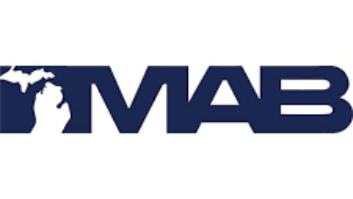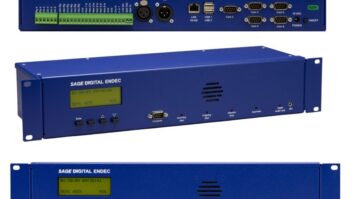Legacy equipment
Feb 1, 2003 12:00 PM, By Doug Irwin
With the transition to digital equipment well into its seconddecade, radio stations probably have some old and obsolete analog geargathering dust on a shelf somewhere. It can be difficult to get rid of,especially if it cost $10,000 10 years ago. Is it possible to put thesetrusted friends back to work?
The station I work for recently added some of the new digital radiosand taken the old analog composite radios out of service. The realityis that these radios still can serve an important purpose. By leavingthe old receivers and transmitters in place, and leaving them connectedto a source of composite audio, (which is from the same audioprocessors that have AES outs driving the new digital STLs) we can goback to using them in a pinch.
It is easy to do. Assuming there is a good enough signal at thereceive end, just divide the RF coming in from the receive antenna withone of the commonly available RF splitters and drive both receiverinputs. Use a coaxial relay at the transmit end (one that will pass950MHz). If there are enough of these old analog radios you may alsohave a coaxial relay from them as well. With this arrangement, thereceiver that becomes ready for use will depend on what transmitter isradiating at the studio end. To extend this idea even further, use oneof the older STL transmitters that is frequency-agile, that way morethan one base is covered.
Another way these old radios put to use is as a part 101 inter-cityrelay to return audio from an RPU receiver located on a distantmountain-top directly back to the studio location. Those of you withlarge RPU systems note: the cost of getting the remote audio back tothe studio is zero � and it works great.
Sometimes, after sitting on the shelf for quite some time, some ofthis gear may not want to come back up so easily; or, from many yearsof use, it may be especially tired. With a little bit of work, allthese problems can be overcome. To make any older piece of gear work,be prepared to do the following.
Cleaning
Cleaning is important because dirt is the primary enemy ofelectronic equipment. Dirt can cause overheating, and of course it caninvade connectors. To resurrect an older piece of gear, disassemble andthoroughly clean it. Replace old fans that may run rough or not at all.Use contact cleaner to displace dirt inside connectors.
Power Supplies
The power supply is your most likely trouble spot. These are thecomponents that get hot, and generally the ones that are affected bypower line disturbances. Electrolytic capacitors in the power supplycan easily dry out and fail, so as a matter of course, find a source ofthe same capacitors and exchange them. Most of these large electrolyticcapacitors have not changed in their shape-form over the years, and soyou may end up getting something that fits perfectly, but has morecapacitance or a higher working voltage.
Special parts
One of the most difficult aspects in dealing with older gear is thelack of specialty parts. Therefore, one of the most important aspectsof keeping older gear running is a scavenger source, such as anotherradio of the same make and model. For example, if you have three oldtransmitters, you may have to decide to keep two going, and to�part-out� the third one.
Moseley PCL-606
This is a radio that I cannot bear to toss out. It works well and itsounds good. It makes a great backup. They will occasionally haveproblems, though. There is an IC that is used throughout the receiverIF sections (the SL-560) that is no longer made and can be difficult tofind. These ICs seem to last about 12 to 15 years and then mysteriouslyfail. In the transmitters and receivers, another common problem is afailure of the little trimmer capacitors in the first local oscillatormodule (receiver) or the 1,020MHz oscillator section of thetransmitter.
One important aspect of the PCL-606 transmitter is that it isactually frequency-agile. There is a set of four rotary switcheslocated in the FMO module that set the frequency. This makes thePCL-606 transmitter valuable as a backup radio. However, the receiveris not agile. The frequency is set by a crystal in the first localoscillator stage. To take the idea one step further, buy a set ofcrystals so that this receiver can back up any of the radio links. Justdrop the specific crystal in place before using the receiver.
Moseley PCL-505
Because this radio is a generation ahead of the PCL-606, there maynot be any in the facility. On the other hand, if you have a stack ofthem around, they can come in handy. Even though it doesn’t have therequired frequency stability tolerance for full-time use, it can stillbe used up to 720 hours a year (essentially one month) in a backuprole. So if the main STLs are PCL-606s (or equivalent), hold on to the505 transmitters. Also, the stability issue has nothing to do with thereceivers, so use those as backups all the time.
The 505s and the 606s use the same deviation vs. input level, soprior to building up the system of backups, calibrate all thetransmitters so that they can be mixed and matched as necessary.
TFT 7700/8300
All the same ideas apply to these radios. Clean thoroughly andchange large power supply electrolytic capacitors. Test the poweroutput, the output frequency and calibrate the deviation to match themain STLs. If there are multiple sets on the shelf, designate one setas the parts set, and keep it in your shop.
Analog tape decks
I recently counted 16 analog reel-to-reel machines in our storage.For some reason none of us can bear letting them go, even though everyday their value goes down. Because analog tape is so expensive, whywould anyone want to use them on a routine basis?
There are music producers around who like to use analog occasionallyor even prefer it for their work. And let’s face it, although digitalrecording and production are the way to go, there are many older analogrecordings that just sound great. If the station has an archive ofrecordings such as these, think about transferring the material fromthese analog tapes to some digital format so that they can bepreserved.
Keeping these old tape decks working is probably more of an art thaneven the old analog radios. However, many of the same rules apply. Themachines should be kept clean, if at the beginning of your restorationproject, they are dirty, start with a thorough disassembly andcleaning. Test all power supply voltages for their nominal dc voltageand ripple; if the ripple looks high, change out the caps.
Before running any tapes over a resurrected transport, check all theparts associated with the tape transport. Check the brake tension fromthe supply reel and the take-up reel. Check the tape path along theheads and guides. If the machine has seen a lot of use, opt to look fora machine with less mechanical wear. Bad bearings in any of therotating parts (capstan motor, take-up or supply reel motors, or pinchroller) can cause flutter in the audio during playback. Check forflutter with a flutter meter. If multiple decks are available, testeach one for flutter as well. The deck with the best mechanicalperformance should be married to the least-worn head-stack.
After testing the transport, do one final test with a piece of tapethat you can afford to wreck. That way, if there are any residualproblems, at least you won’t have ruined your project tape.
Here is a look at some of the most common tape machines found aroundradio stations.
Otari MX-5050B
This was an old reliable workhorse. Some of the critical playbackadjustments are on a motherboard inside the deck, and are not easilyaccessible during alignment. If the station has multiples of thismachine, find the one with the least worn transport and tape path, andemphasize re-using it.
MCI JH-110B
This machine was probably the best sounding one, when it was workingcorrectly. Many of us know it was famous for all sorts of problemsassociated with flaky connectors under the deck (molex connectors),between the deck itself and the power supply. One of the best features,though, was its three-speed capability, along with easily accessibleadjustment points for record and playback for all three speeds.
Studer A810
This machine is still commonly in use. A couple of typical problems:the rubber washers on the brake assembly dry out, and need to bereplaced so that the brake tension is correct. Studer still sells thereplacements. There are large electrolytic capacitors coupling theoutputs of the heads to the preamps; they age, dry out and then affectthe frequency response. Older decks should have these changed. Thereare vendors out there still selling parts and refurbishing tapeheads.
Keeping some older equipment around, in working shape and ready togo will save time and tribulations at some point. By being pro-activeyou become a more valuable team player at the radio station.
Irwin is director of engineering services for Clear Channel ofSan Francisco.
Vendor List
- Mini-Circuits
718-934-4500
http://www.minicircuits.com - D.W. Electrochemicals Ltd.
905-508-7500
http://www.stabilant.com - J-Squared Technical Service
541-471-2262 - International Crystal Manufacturing.
1-800-725-1426. http://www.icmfg.com - JRF Magnetics
973-579-5773
http://www.jrfmagnetics.com











